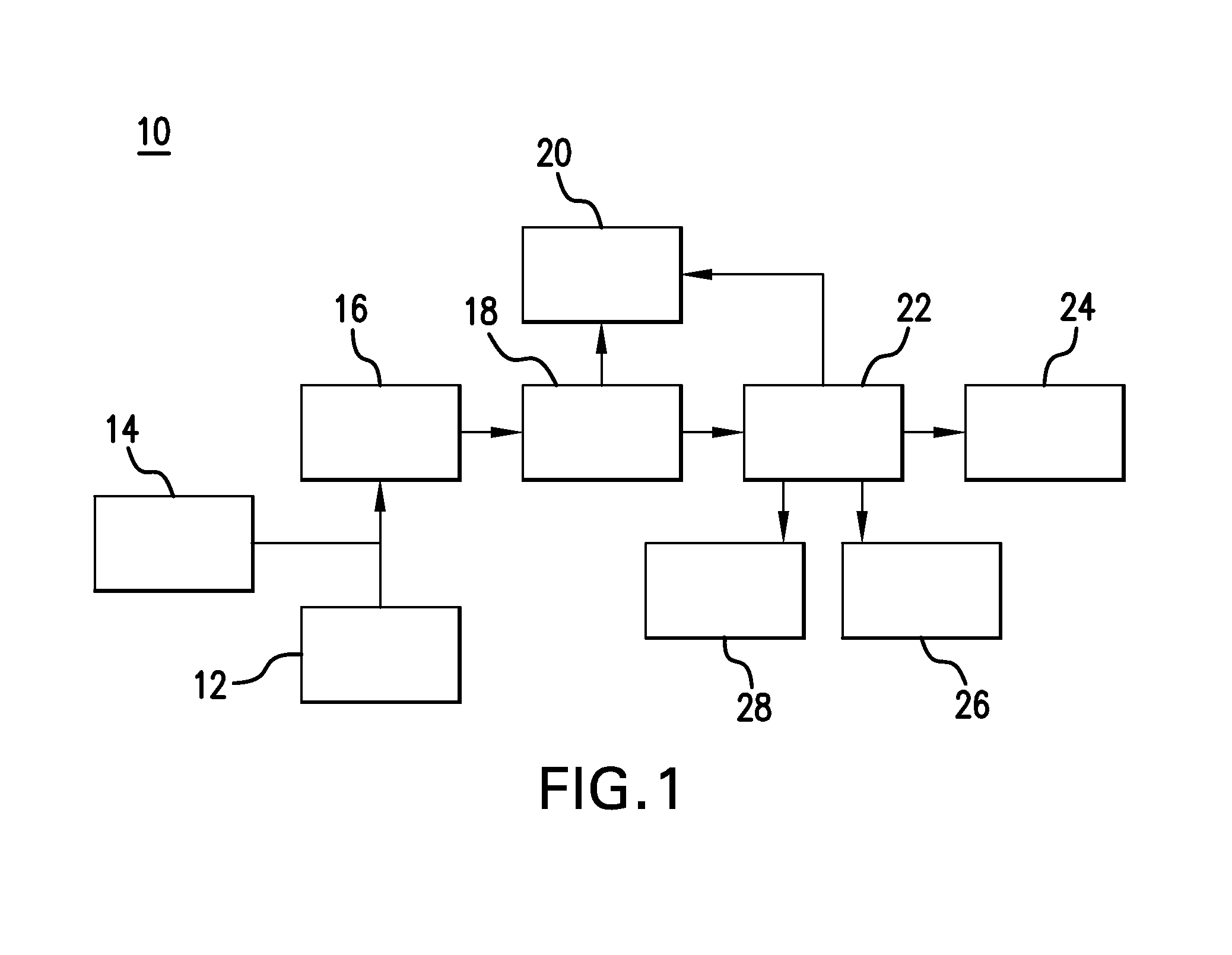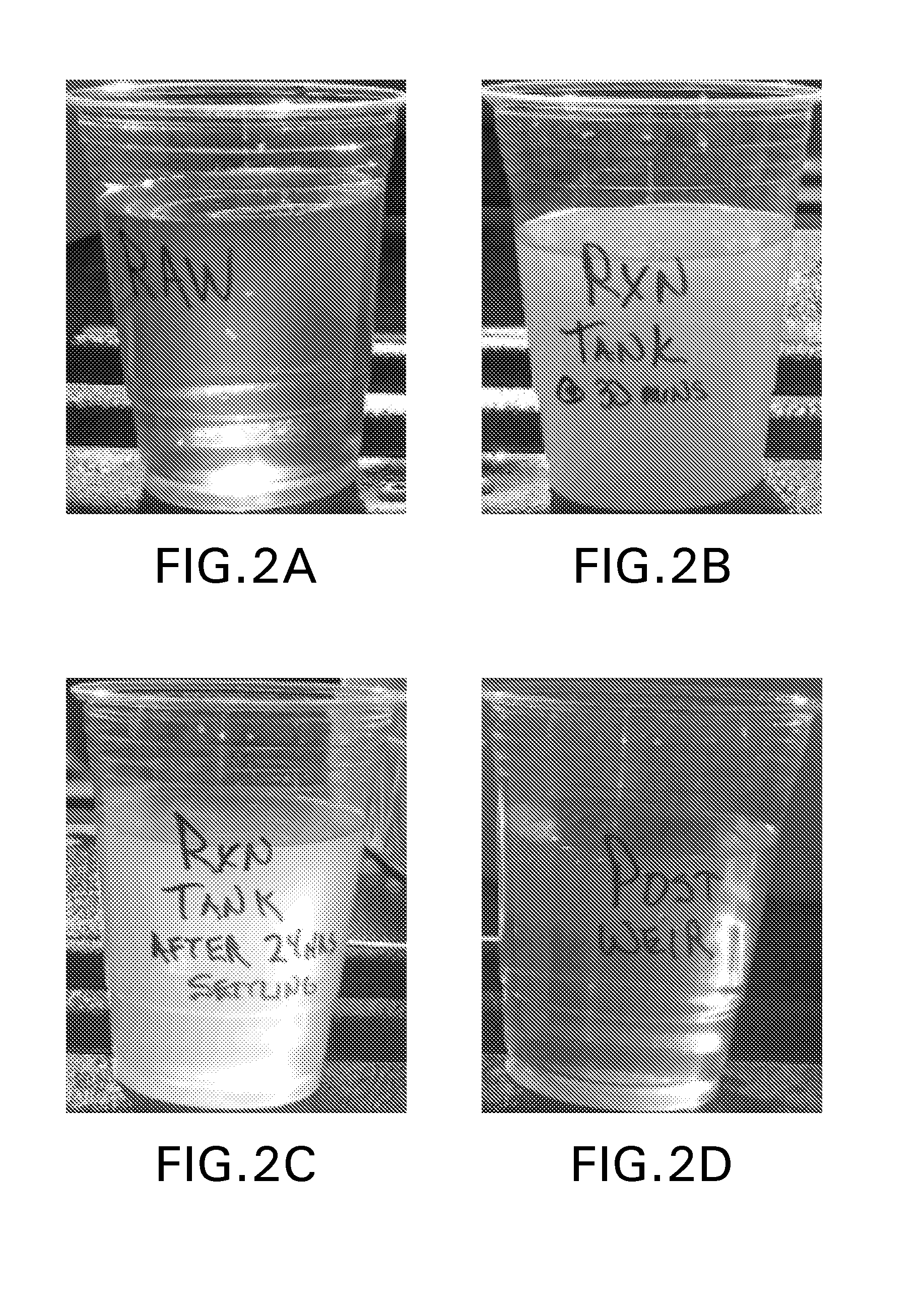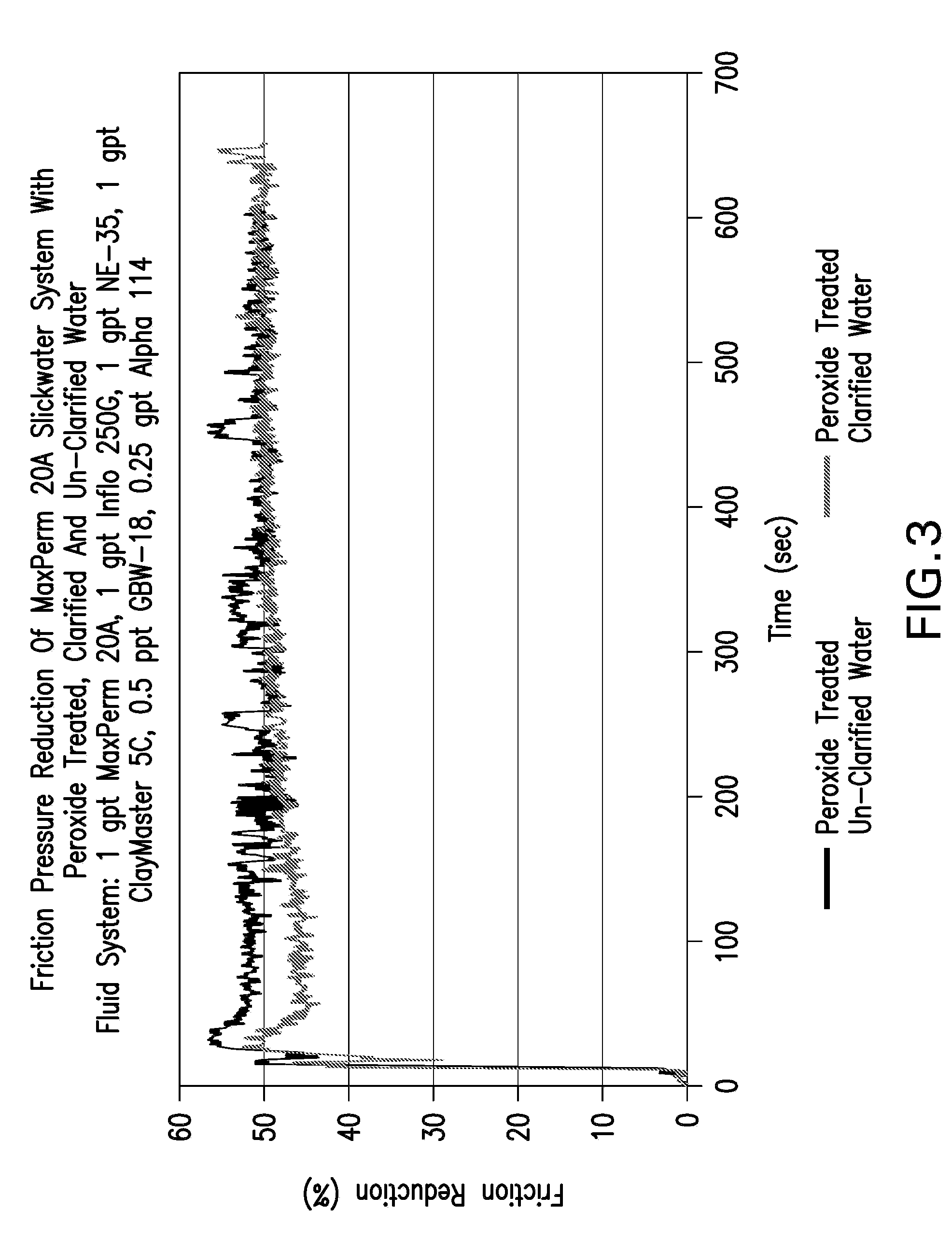Method for reducing sulfide in oilfield waste water and making treated water
a technology of oilfield waste water and sulfide, which is applied in the direction of water treatment multi-stage treatment, waste water treatment from quaries, borehole/well accessories, etc., can solve the problems of water treatment cost and time, hard water ions accumulate, and metal divalent alkali metals are difficult to solv
- Summary
- Abstract
- Description
- Claims
- Application Information
AI Technical Summary
Benefits of technology
Problems solved by technology
Method used
Image
Examples
Embodiment Construction
[0012]A detailed description of one or more embodiments is presented herein by way of exemplification and not limitation.
[0013]It has been found that hydrogen peroxide efficiently treats oilfield waste water that contains sulfide with formation of a colloidal or bulk sulfur precipitate. The hydrogen peroxide converts sulfide to sulfur in the aqueous solution for high and low amounts of sulfide in the water. Produced water and flowback water having high H2S content and treated with the hydrogen peroxide form colloidal precipitates without the addition of a transition metal catalyst even at an elevated pH. Thus, the produced water and flowback water is reused as a hydraulic fracturing fluid or in enhanced oil recovery applications. Moreover, the methodology is simple and low cost for the removal of the hydrogen sulfide from natural gas or liquid streams with concomitant formation of colloidal or bulk sulfur precipitates. The oxidation and precipitation is environmentally friendly and ...
PUM
| Property | Measurement | Unit |
|---|---|---|
| Fraction | aaaaa | aaaaa |
| Electric potential / voltage | aaaaa | aaaaa |
| Equivalent mass | aaaaa | aaaaa |
Abstract
Description
Claims
Application Information
 Login to View More
Login to View More - R&D
- Intellectual Property
- Life Sciences
- Materials
- Tech Scout
- Unparalleled Data Quality
- Higher Quality Content
- 60% Fewer Hallucinations
Browse by: Latest US Patents, China's latest patents, Technical Efficacy Thesaurus, Application Domain, Technology Topic, Popular Technical Reports.
© 2025 PatSnap. All rights reserved.Legal|Privacy policy|Modern Slavery Act Transparency Statement|Sitemap|About US| Contact US: help@patsnap.com



